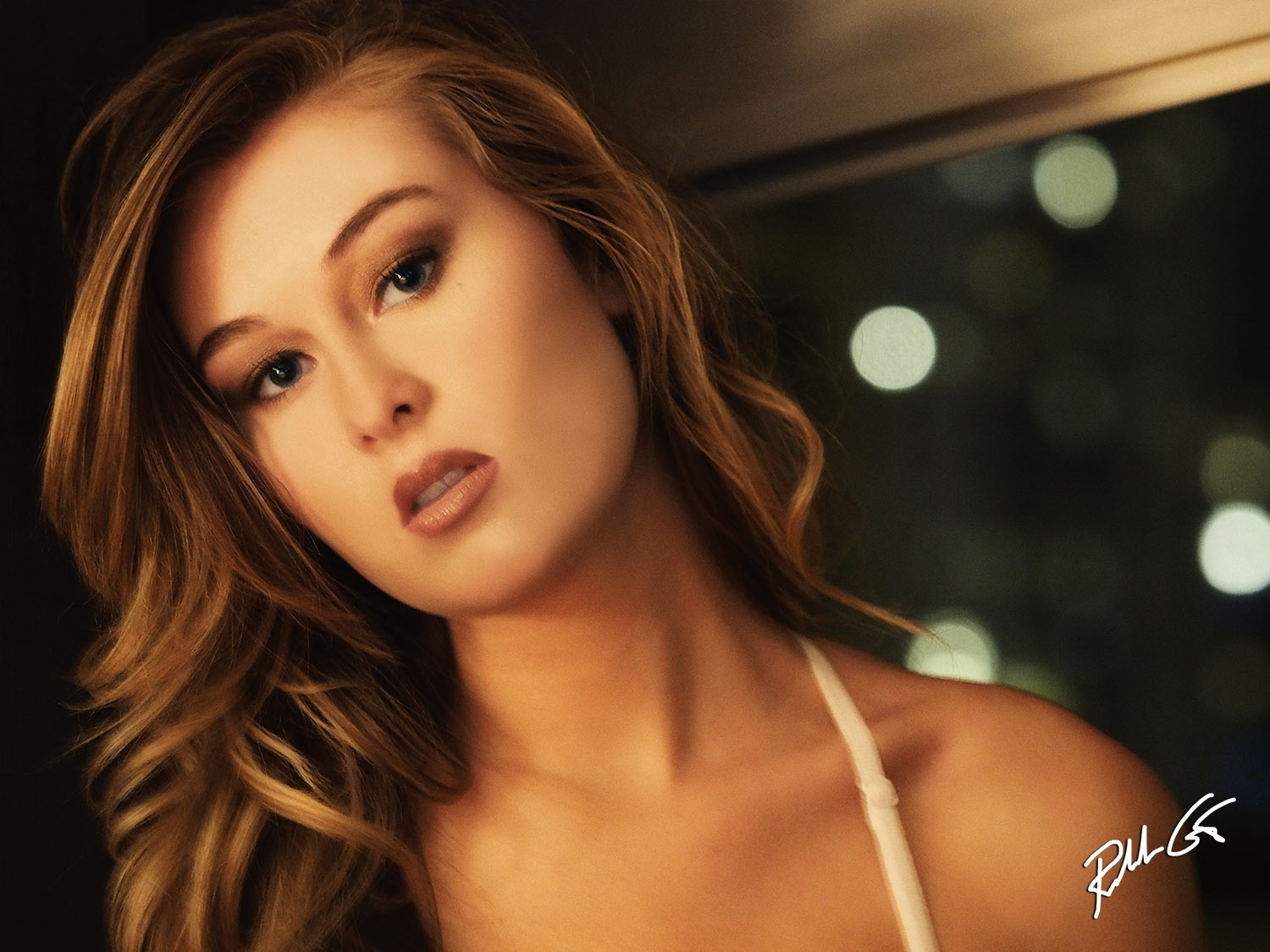Ten Finger Normalcy. Whether you believe in numerology or not, the numerical values of life are based on numbers so we can count, label, and measure the reality around us. When you’re born, a doctor inspects your body for five toes on each foot plus checks to see if you have five fingers on each hand for normality. Analog film photographers checked for normality too when it came to the purchase of their photographic gear; they looked for aperture rings with numbers on lenses and shutter speed dials with numbers on camera bodies.

Rebecca photographed with a mirrorless camera on location.
Film photographers knew the importance of numbers in aperture values, shutter speeds, and even ASA/DIN numerical values unlike digital photographers today who seem more focused on camera megapixels and storage card gigabytes. Makes me wonder how many photographers know that the difference between f/5.6 and f/6.3 is only 1/3rd stop.
It’s as if no one even cares about numerical exposure values, and why should we? We’ve got smartphones combined with amazing apps, a bit of sheer luck, and technology that can sometimes create photos better than the most expensive digital cameras ever made. Chalk it up to the bytes and bits that make up digital technology that relies on a numerical series of ones and zeros.
Professional digital cameras are so technology driven today; that few photographers shoot by the numbers in manual mode. Cameras now come with auto ISO (ASA/DIN), auto exposure, auto white balance, auto focus, auto-etc., that the only auto missing is auto-intelligence where the camera knows when you really wanted to depress the shutter release vs. when you actually did—you know, that natural time delay between your brain, eyes, and fingers.
Wait, it’s here. The new Olympus E-M1 Mark II has the “Pro Capture Mode” where the camera actually captures and buffers photos when you push the shutter release halfway down. Once you fully release the shutter the camera writes to the SD card the last 14 frames captured before your actual full shutter release, plus the actual capture—for that just-in-case-you-missed-the-shot during your thought and reaction time lag.

This photo was taken with the Olympus E-M1 Mark II mirrorless camera system and a SUNBOUNCE MINI reflector with their SPARKLING SUN fabric.
It’s got more too. The E-M1 Mark II is a mirrorless camera with an advanced five-axis image stabilized sensor that allows you to handhold the camera at slow shutter speeds without a tripod. Plus the camera has facial recognition focus that can lock on the right, left, or the eye closest to the camera when photographing people, and an electronic WYSIWYG viewfinder where you can verify focus and exposure for a what-you-see-is-what-you-get photo when you release the shutter.
Take all the camera’s auto-ness; ISOs, exposure modes, plus eyeball focus recognition, a WYSIWYG electronic viewfinder, and todays clean high ISO’s, and who needs to worry about the numbers? I’ve always been a shoot by the numbers manual mode photographer, but today I find that it’s easier to let the camera do the work and the only numbers I dial in are the white-balance and aperture values for my photographic shooting style.
I never thought I’d say this, but I shoot more aperture priority today when I photograph people, vs. shooting in manual mode. About the only time I shoot by the numbers in manual mode today is with studio flash. Even that method is limited as I’m in love with how the Olympus mirrorless camera system captures light that doesn’t appear to the human eye. I’ve found reflected light from my SUNBOUNCE SPARKLING SUN reflector combined with the smaller pixels found in the micro four-thirds camera flatters the skin of my subjects unlike previous DSLR camera combinations.
With this new found combination of reflected light with a mirrorless camera, I don’t worry about the ISO and shutter speed my camera chooses to ensure a proper exposure. Two years ago you’d never hear me say the latter, and most certainly not back in my analog film days, but it’s true. I take advantage of the WYSIWYG electronic viewfinder in my E-M1 Mark II and know when I press that shutter release I truly get what I see in my viewfinder with little effort.
So while I know the importance of the numerical values when it comes to f/stops and shutter speeds, I don’t worry about the numbers. With the camera set on auto-ISO and aperture priority mode, I only set the aperture and white balance numbers for my shooting style. That is my new normalcy—I let the camera do the work, though I still use ten fingers to hold the camera.



